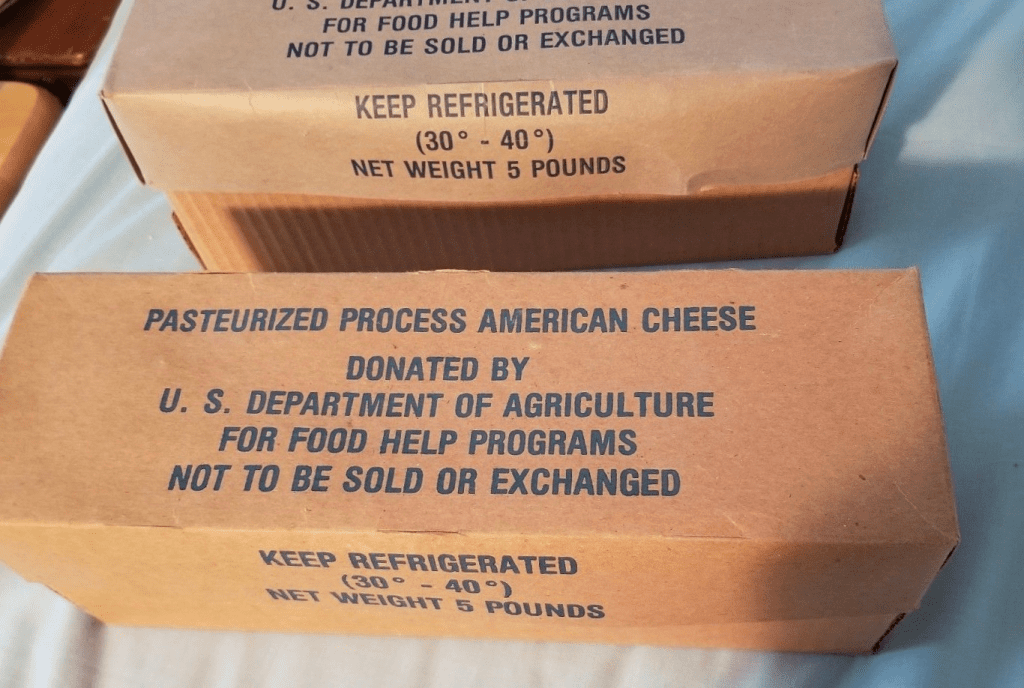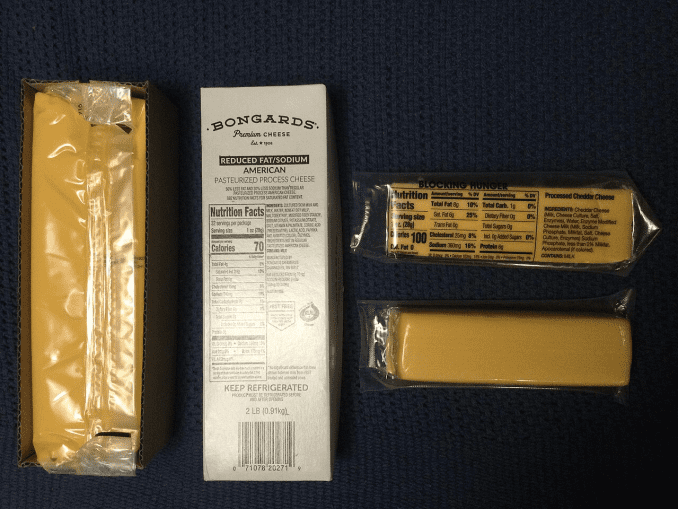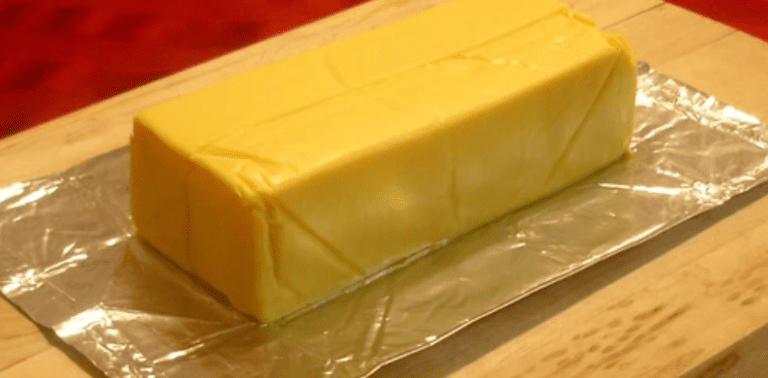Government cheese—a humble block of processed dairy—holds a unique place in American history. For decades, it represented the intersection of agriculture, economics, and social welfare. Distributed to millions of Americans, it became a staple in homes, schools, and food banks. But what exactly is government cheese, and how did it come to symbolize both sustenance and struggle? Let’s dive into its fascinating history, production, and lasting cultural impact.
What Is Government Cheese?

Government cheese is a processed dairy product made by blending various types of cheese, such as cheddar and Colby, with emulsifiers to enhance its texture, meltability, and shelf life. The result? A durable, smooth cheese that could be stored and transported efficiently without spoilage.
Its flavor? Opinions are mixed. Some compare it to a mild cheddar, while others describe it as reminiscent of Velveeta. Love it or hate it, government cheese holds a special place in the memories of those who grew up eating it.
The Birth of Government Cheese: From Surplus Milk to Processed Dairy
The origins of government cheese trace back to World War II. To stabilize dairy prices and support farmers, the U.S. government heavily subsidized milk production. These subsidies, however, led to an overabundance of milk, creating a massive surplus that needed a solution.
Rather than let the excess go to waste, the government began converting surplus milk into longer-lasting products like powdered milk, butter, and cheese. By the 1980s, the United States had accumulated a staggering stockpile of cheese—stored in over 150 warehouses across 35 states.
Why Was Government Cheese Distributed?
In the 1980s, under President Ronald Reagan’s administration, the government sought to address the surplus while combating hunger among low-income Americans. The solution? Distribute government cheese through welfare programs, food banks, and schools.
This move served a dual purpose:
- Stabilizing the Dairy Industry: Reducing the surplus helped maintain milk prices and supported dairy farmers.
- Feeding the Hungry: Distributing the cheese provided a much-needed source of sustenance to millions of Americans during tough economic times.
While it addressed both economic and social challenges, government cheese also highlighted the nation’s reliance on processed foods in combating food insecurity.
How Was Government Cheese Made?
The production of government cheese was a carefully engineered process aimed at efficiency and longevity. Officially labeled as “pasteurized process American cheese,” it was created by blending multiple cheese types with added emulsifiers.
Key ingredients included:
- Cheddar: For its sharp flavor.
- Colby: For its creamy texture.
- Granular Cheese: To achieve a consistent, smooth finish.
The emulsifiers played a crucial role, ensuring the cheese could withstand long storage periods and remain meltable for versatile use. This made it ideal for mass distribution and institutional settings.
The Nutritional Debate: A Lifeline or a Concern?

Government cheese was undeniably a lifeline for many, but its nutritional profile sparked debate. While it provided essential calories and protein, it was also high in fat and sodium.
Per ounce, government cheese contained:
- Calories: Approximately 100.
- Fat: 9 grams (6 grams saturated).
- Sodium: 380 milligrams.
This composition raised concerns about its impact on health, particularly among low-income populations already at risk of obesity and related illnesses. Critics argued that relying on calorie-dense, processed foods to combat hunger came with long-term health consequences.
Government Cheese in Schools and Military Kitchens

Long before it became a household staple, government cheese played a vital role in institutions. During World War II, it was used to feed soldiers in military kitchens. By the 1950s, schools across the U.S. began incorporating it into cafeteria meals.
For countless children, government cheese was the foundation of grilled cheese sandwiches, macaroni and cheese, and other lunchroom classics. While its taste was divisive, it filled an essential nutritional gap for many students.
The Cultural Significance of Government Cheese
Over the years, government cheese became more than just a food item—it evolved into a cultural symbol. It’s been referenced in music, comedy, and pop culture, often as a metaphor for hardship or resilience.
For many, it evokes memories of survival during tough times, whether it was served in a childhood meal or as a necessity during economic struggles. Despite its practical origins, government cheese holds an emotional resonance for millions of Americans.
Why Did Government Cheese Disappear?

By the late 1990s, advances in agricultural policy and changes in welfare programs led to the gradual phase-out of government cheese. Efforts to better balance dairy production with market demand reduced the surpluses that had necessitated its creation.
Although government cheese no longer plays a role in food assistance programs, its legacy endures as a reminder of how food policy, economics, and social welfare intersected during a pivotal era in U.S. history.
Conclusion: A Block of History
Government cheese is far more than a processed dairy product—it’s a symbol of resilience, necessity, and a uniquely American story. Born out of economic challenges, it fed millions during times of need while highlighting the complexities of hunger and food distribution in the United States.
Whether it brings back memories of childhood lunches, military rations, or community food drives, government cheese remains a poignant reminder of the past. Its history underscores the power of food to nourish not just bodies, but also stories of survival, adaptability, and perseverance.
As we reflect on its legacy, government cheese stands as a testament to an era when even the simplest block of dairy carried profound social and cultural weight. It’s a piece of history that, for many, will never be forgotten


